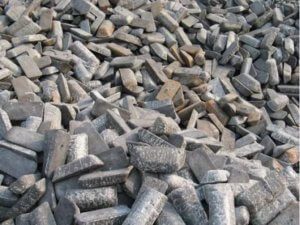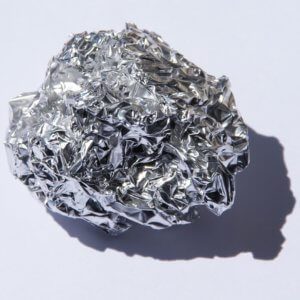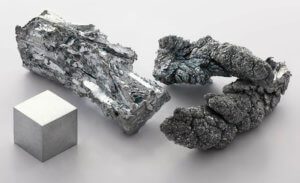
Ukraine in January-July 2018 increased exports of pig iron in natural terms by 59.3% compared to the same period in 2017, to 1.768 million tonnes.
According to customs statistics released by the State Fiscal Service, during this period exports of cast iron in monetary terms rose by 78.6%, to $608.696 million.
At the same time, exports were mainly made to the United States (57.41% of deliveries in monetary terms), Italy (14.21%), and Turkey (8.35%).
In January-July 2018 Ukraine imported 836 tonnes of similar products for $493,000, while in January-July 2017 some 1,352 tonnes worth $683,000. Imports were carried out from Russia (79.31% of deliveries in monetary terms), and Germany (20.69%).
As reported, Ukraine in 2017 reduced exports of cast iron in natural terms by 7.8% compared to the previous year, to 2.342 million tonnes, but increased in monetary terms by 33.9%, to $738.130 million. At the same time, exports were mainly made to the U.S. (55.05% of deliveries in monetary terms), Italy (24.69%), and Turkey (7.95%).

Ukraine in January-July 2018 increased imports of manganese ore and concentrate in natural terms by 1.5% compared to the same period in 2017, to 580,980 tonnes.
According to customs statistics released by the State Fiscal Service of Ukraine, during this period imports of manganese ore and concentrate in monetary terms increased by 32%, to $113.953 million.
Main imports were from Ghana (51.97% of deliveries in monetary terms), the Republic of South Africa (22.82%), and Russia (15.71%).
In January-July 2018 Ukraine reduced exports and re-exports of manganese ore and concentrate in natural terms by 29%, to 29,491 tonnes, in monetary terms by 2.4%, to $2.144 million. Exports and re-exports were made to Hungary (44.47% of supplies), the Russian Federation (18.71%), and the Czech Republic (17.64%).
As reported, Ukraine in 2017 increased imports of manganese ore and concentrate in natural terms by 36.1% compared to 2016, to 1.303 million tonnes, in monetary terms by 69.3%, to $223.434 million. Major imports were carried out from Ghana (41.28% of deliveries in monetary terms), the Republic of South Africa (22.73%), and Russia (19.23%).

Ukraine in January-July of this year increased imports of aluminum ore and concentrate (bauxites) in natural terms by 6.3% compared to the same period in 2017, to 2.772 million tonnes.
According to customs statistics released by the State Fiscal Service, during this period bauxite imports in monetary terms decreased by 1.3%, to $109.994 million.
At the same time, imports were mainly from Guinea (57.99% of deliveries in monetary terms), Guyana (35.86%), and Brazil (5.48%).
In January-July 2018 some 45 tonnes of bauxite were re-exported to Poland for $5,000, whereas in January-July 2017 some 22 tonnes of bauxite were re-exported to Poland for $1,000 and 140 tonnes worth $9,000 to Russia.
As reported, Ukraine in 2017 raised imports of bauxite in natural terms by 21.8% compared to 2016, to 4.864 million tonnes, in monetary terms by 36.9%, to $212.370 million. Imports were carried out mainly from Guinea (45.92% of supplies in monetary terms), Guyana (28.72%), and Brazil (14.86%).
As a whole, in 2017 some 162 tonnes worth $10,000 were exported, whereas in 2016 re-exports were not carried out.

Ukraine in January-July 2018 increased imports of nickel ore and concentrate in natural terms by 13.4% compared to the same period in 2017, to 891,674 tonnes.
According to customs statistics released by the State Fiscal Service, in monetary terms nickel ore imports rose by 13.5%, to $43.584 million.
At the same time, imports were made from Guatemala (71.01% of deliveries in monetary terms), and Indonesia (28.99%).
For the seven months of the year, Ukraine did not export and re-export these products, as well as in January-July 2017.
As reported, Ukraine in 2017 reduced imports of nickel ore and concentrate in natural terms by 4.2% compared to 2016, to 1.314 million tonnes, in monetary terms by 8.3%, to $64.172 million. At the same time, all imports were from Guatemala (100% of supplies).
Pobuzke Ferronickel Combine (part of Solway Group) imports nickel ore to Ukraine.
The plant processes about 1.2 million tonnes of ore a year.